There’s no universal rule that dictates when a child is ready to transition to a geared bike; first and foremost it depends on their ability as well as where and how they ride. One thing is clear: gears are best avoided in the first few years. The complexity of shifting could overwhelm a child at a time when they have got other skills that need to be honed first. Keep reading to see when gears make the most sense for your child:
First off…
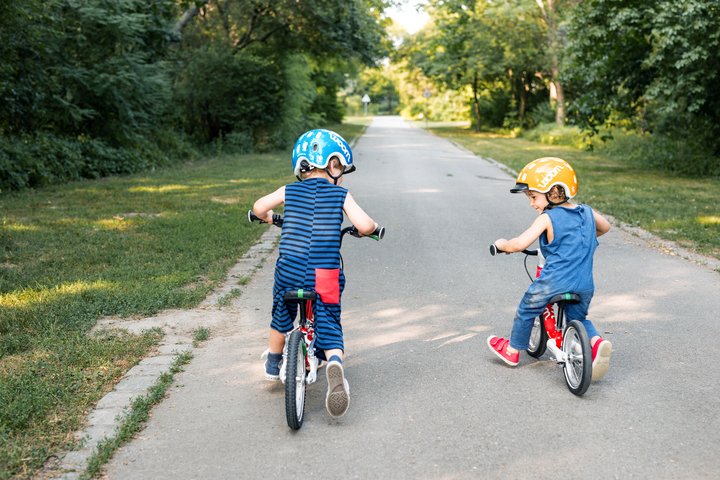
When stepping into the glorious world of cycling, the first priority is to develop a feel for two wheels. Your child has all manner of new skills to learn – like keeping balance, steering, braking, and then combining it all. It’s far from easy! Balance bikes are the ideal way to train a child’s sense of equilibrium. After a bit of practice your child will soon be able to stay upright and control their direction. Their progress will be sped up if you’re able to acquaint them with hand-operated braking on their balance bike. But even if children may prefer to use their feet to brake, it's still a fundamental step to prepare them for the transition to their first bike.
Time to start pedalling!
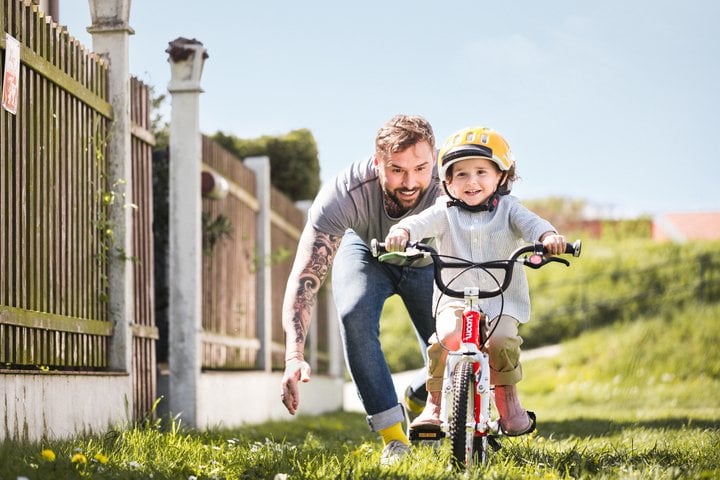
Has your child already mastered balance and braking safely? Now it’s time for the next step: their first pedal bike. As a general rule, children move onto their first pedal bike between the ages of three and five. The biggest difference to their current balance bike is that they’re now expected to pedal. Before they even get on the bike, our top suggestion is to begin by demonstrating the fundamentals of how a pedal bike actually works.
Then it’s time to get out in the real world. Don’t forget to make sure the emphasis is on having fun rather than training. Through the act of playing, children will subconsciously pick up on the essentials of bike riding – pushing off to start, turning the pedals, using the front and rear brakes, and coming to a gentle stop.
During this learning phase, your child should focus exclusively on the act of riding to ensure that they get the hang of being on the bike. Adding gears at this early stage would be distracting and they’re likely to be overwhelmed by the addition of a whole new process. What’s more, distances tend to be limited at a young age; short routes to nursery or a local playground won’t usually require gears.
But time flies –and probably even before you know it – the little adventurers will be ready to step up a gear…
– with gears on their bike!
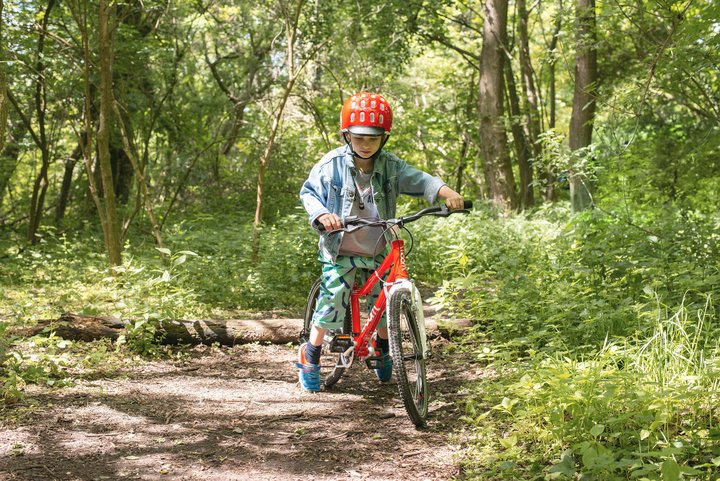
Now we're talking! Your child has mastered the basics of biking, cruises around corners with ease, and whizzes up and down small hills. Perhaps you’re now planning some routes that cover a bit more distance and satisfy their ever-growing urge to ride? Here’s where one gear just won’t cut it!
Gears are recommended from the age of six and on 20-inch wheeled bikes and upwards. This is why we have developed the woom 4 with eight gears. We have designed it to be as intuitive and simple as possible so that kids rapidly get a grip on using their gears and learn to twist-shift their way through them without any difficulties:
- the twist-shifter offers a firm grip for children’s hands
- minimal hand strength is required to twist
- shifting is precise and perceptible
- a child can see exactly which gear they’re in on the gear indicator
Learn how to shift correctly
Let’s break for a brief technical interlude: when changing gears, the rear derailleur moves the chain onto a different sprocket on the rear cassette. To ensure that the chain glides smoothly onto the teeth of the sprocket, the chain needs to be moving. That means your child has to keep pedaling gently while changing gear.
Spend some time explaining the principle of gears to your child and showing them the components. You should aim to stay alongside them as they’re practicing. For this purpose, try and find a flat or slightly downhill stretch of tarmac that’s free from traffic. It’ll be more fun for your child here. Now, for the action:
- Set off and reach some speed,
- Remove pressure from the pedals,
- shift gears,
- pedal gently until the chain has smoothly latched onto the teeth
- and then you can pedal hard again.
Timing is everything! It’s pretty likely that your child won’t immediately be able to gauge the right moment to shift. You can easily support them in this learning process by calling out each step. After all, the smoother the shifting, the more fun it’ll be for your child on the ride. Tip: before getting off the bike, make sure your child shifts down to a low gear. This will make the next ride even easier to begin.
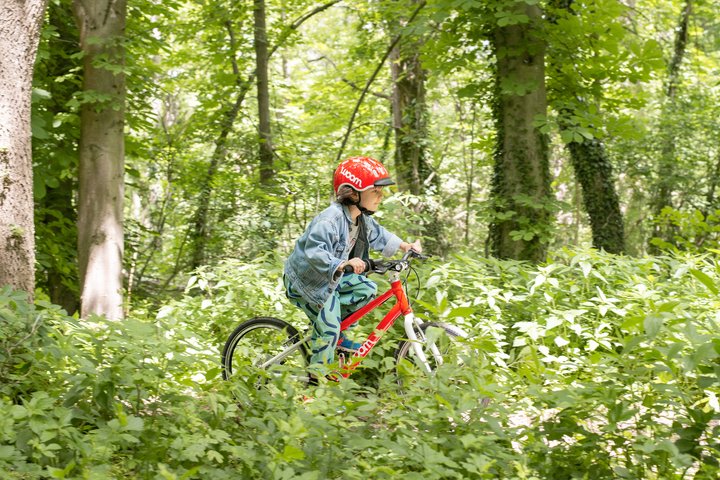
Listen out for the shifting: the quieter the shift, the better. This is not just about expending less energy, but also preserves the drive train. Everyone recognizes the unpleasant grinding sound of shifting under load. It’s damaging for the derailleur and chain, but can be avoided with some practice.
So what are the benefits of gears?
On a practical level, having a bicycle with gears makes cycling easier. On the one hand, your child will be able to climb more comfortably and it’ll feel less demanding. And on the other hand, they’ll be able to reach higher speeds–and keep them. The most important thing here is that your child picks the right gear:
- In a low gear, the pedals are easier to turn ↠ this is the best gear for climbing and starting.
- A higher gear means more resistance while pedaling ↠ these gears will mean you go faster with more ease when you're on flat or downhill sections.
The hunt for the right gear might need some patience. Take it slowly and over time they will get the feel for which gears work in which scenarios.
Once your child has got the hang of it, there’s nothing stopping you all from riding further afield on bigger adventures. Whether heading into the hills or through the woods, the added versatility that comes from having gears will serve as another boost to the fun factor.
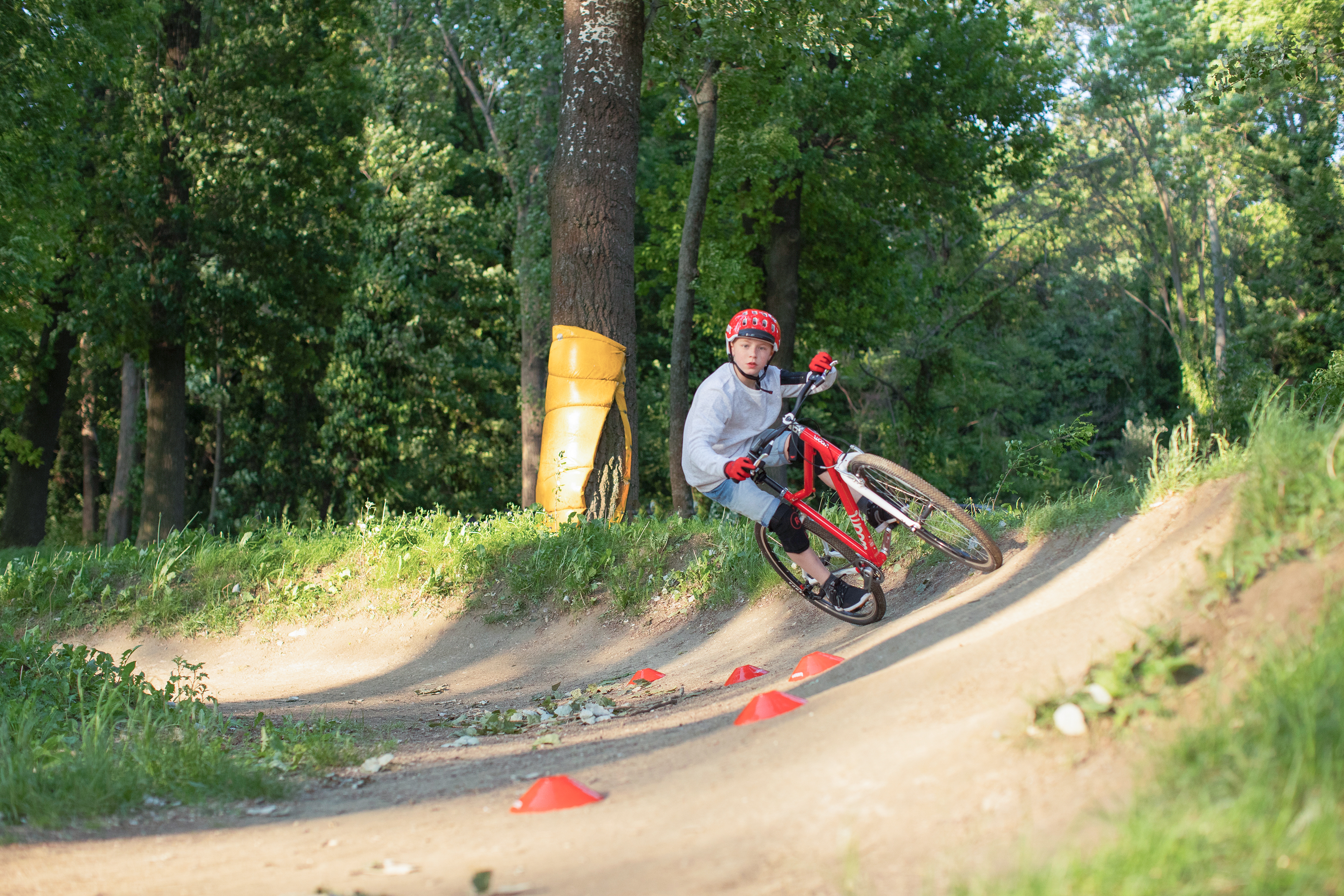

.jpg?width=926&upsize=true&name=woom_still_and_moving_in_action_2018_345-Edit-720x480-32ef3212-c95f-4d63-b83a-d57bf7c038f6%20(1).jpg)
